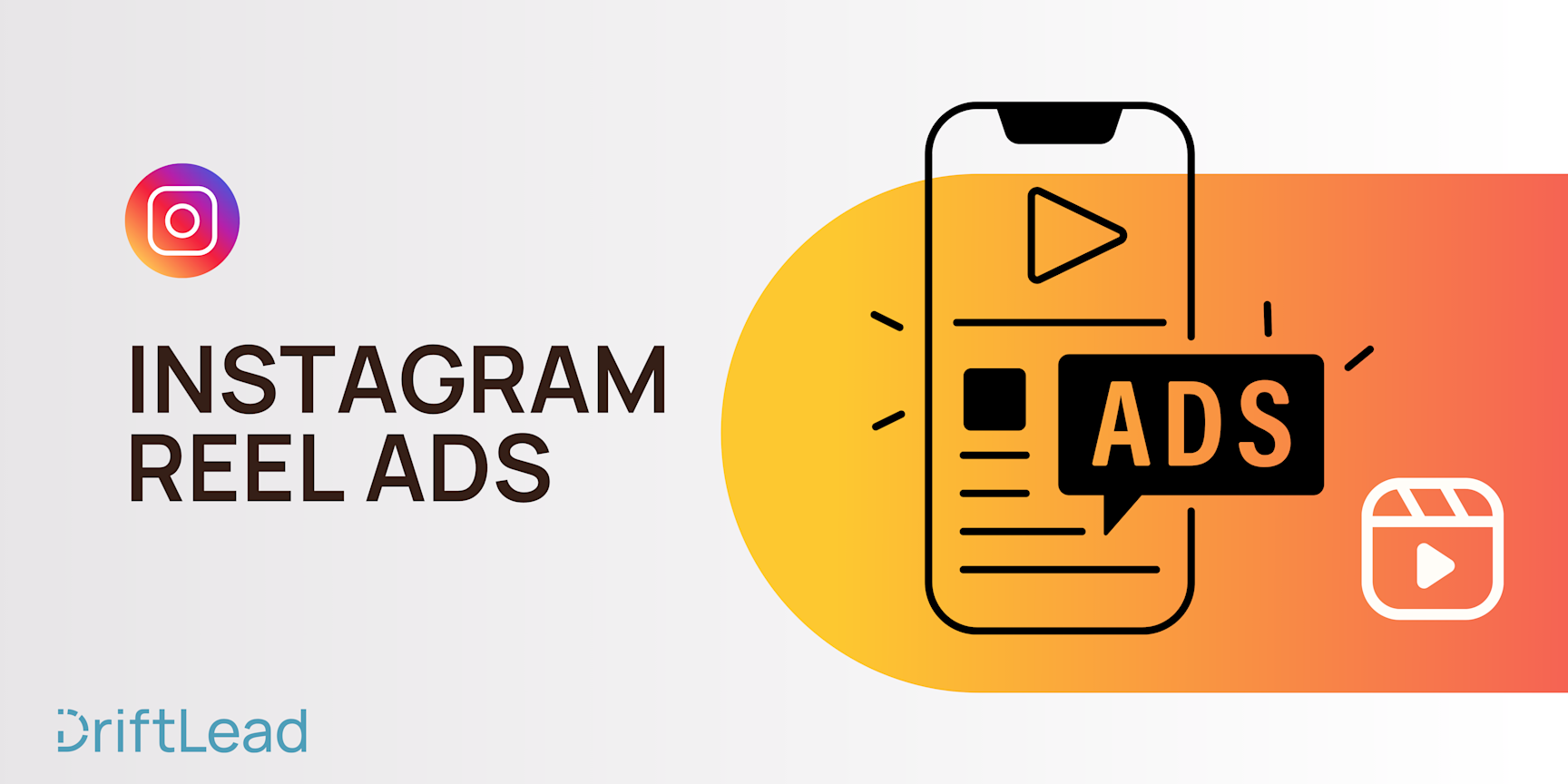Optimizing Facebook Ads for Real Estate Sellers
05 Oct, 2023
Unlock the secrets of optimizing Facebook ads for real estate sellers. Dive into targeted audience strategies, compelling content creation, and the power of social proof. Turn 'For Sale' into 'Sold' with expert insights
Jump to:
Hop on our weekly newsletter train! We're sharing tips so stellar, we're practically job-threatening ourselves!
Real estate and Facebook Ads. Two worlds you might not immediately pair together, like pineapple on pizza or wearing socks with sandals. 😜 Yet, when combined just right, these two can make magic happen (much to the delight of pineapple-pizza lovers everywhere).
In today's fast-paced digital age, the for-sale signs on front lawns are getting a virtual companion. That's right! Traditional home listings are now tapping into the expansive universe of Facebook Ads, and it's revolutionizing how homes are sold.
Thanks to the Meta universe (not to be mistaken for the Metaverse—sorry, Zuck, we were rooting for it too), you can now sell that Victorian home with a recently renovated kitchen to the folks who have been binge-watching home makeover shows and itching for a property just like it. Now, you can target potential buyers with accuracy that's almost uncanny.
But here's the catch: wielding this tool effectively isn't just about slapping some pictures online with a "For Sale" caption. Oh no, dear reader. It's an art. A science. A sprinkle of strategy with a dash of creativity. And that's precisely what we're about to tackle.
So, whether you're a seasoned real estate mogul or just stepping onto the property ladder, fasten your seatbelts. We're about to embark on a journey to decode how to optimize Facebook Ads for real estate sellers. And trust us, by the end, you'll be selling homes faster than you can say "open house"! 🏡
Targeting the Right Audience for Each Listing
In the world of real estate (and really...anything, for that matter), one size rarely fits all. Just as you wouldn't recommend a sprawling suburban mansion to a hip young professional looking for a sleek city loft, nor should your Facebook Ads cast a wide, undiscriminating net. It's time to get hyper-specific and leverage the full force of Facebook's targeting capabilities. But don't fret; it's less "Big Brother" and more "savvy real estate marketer."
1. Dive into Demographics: Facebook's demographic targeting tools are as deep as they come. Selling a chic downtown studio? Target the younger demographic, perhaps those recently employed or those who've shown interest in urban lifestyles. On the other hand, a cozy 3-bedroom house near a school might appeal more to young families.
2. Geo-Target like a Pro: No one wants a two-hour commute, right? Use Facebook's location targeting to show your listing to those who work or frequently visit places near the property. Make life easier for your potential buyers, and they just might thank you with a purchase.
3. Behavior & Interest Targeting: This is where the fun begins. Has someone been frequently visiting home decor or DIY home renovation pages? Or perhaps they've been engaging with content around moving cities or starting a family. These are the golden audiences you want to tap into. They're already in the mindset; your ad might be the nudge they need.
4. Custom Audiences & Lookalike Audiences: Already have a list of past interested buyers? Upload it to Facebook and create a Custom Audience to retarget them. You can also use this list to create Lookalike Audiences—people who share similar characteristics and behaviors with your past buyers. It's like cloning your best audience, minus the sci-fi drama.
5. Native Facebook Lead Gen Forms vs. Landing Pages: Ah, the age-old debate (well, as old as Facebook Lead Gen ads shipped). Using native Facebook Lead Gen forms can boost conversions since users stay within the platform. They're especially handy if your website's load time resembles a sloth on vacation. However, a well-designed, fast-loading landing page allows for richer content, videos, and can help better filter out low-quality leads. It's worth testing both to see which resonates more with your audience.
6. The Power of Retargeting: Remember that user who clicked on your ad, watched the video tour of the home but didn't fill out the lead form? They're still interested; they might've just been distracted by their cat's antics. Use retargeting to remind them of what they're missing out on. Show them another feature of the house or perhaps a sunset view from the balcony. Jog their memory, and bring them back!
Understanding your property and its unique selling points is only half the battle. The other half is making sure the right people see it. As the saying goes, "It's not about having the right opportunities; it's about handling the opportunities right." And with Facebook's audience targeting, you're well-equipped to do just that.
Ad Content That Sells Properties
Alright, let's get into the meat and potatoes (or for our vegan friends, the tofu and quinoa) of Facebook advertising for real estate sellers: the ad content. It's where the magic happens, turning a casual scroller into a potential homebuyer. With a market as visually driven as real estate, creating a compelling, engaging ad is crucial. Here’s the blueprint:
1. High-Quality Photos: This one's a no-brainer. A property's photos can make or break a sale. Ensure photos are well-lit, high-resolution, and professionally taken. Give users a reason to stop their endless scrolling and dive into your listing.
2. Carousel & Video Tours: Facebook's carousel ads are a real estate agent's dream. Showcase different rooms, views, or features of the property. Got a bathroom that rivals a spa? Show it off! A garden perfect for summer BBQs? Let them see! Videos add another layer of depth, allowing potential buyers to take a virtual tour. A walk-through video adds life to your listing, making viewers feel like they're right there.
3. Ad Copy That Connects: Your photos reel them in, but your copy seals the deal. Emphasize unique amenities, key features, and nearby attractions. Instead of "3 bedrooms, 2 baths," try "Wake up in one of the three sun-drenched bedrooms, or relax in the spa-like baths." Make it enticing and memorable.
4. Emphasize the Emotion: Buying a house isn't just a financial decision; it's an emotional one. Craft ad content that evokes feelings. Instead of just "a house with a large backyard," paint a picture: "Imagine your kids playing on the lush lawn as you sip your morning coffee on the porch." Well, as with everything, test it, of course. 😉
5. Call to Action (CTA) That Gets Clicks: Your CTA is the critical finale. Avoid generic phrases like "Learn More." Opt for something specific and enticing like "Step Inside Your Dream Home" or "Book a Virtual Tour Today!" While, Facebook has a preset list of CTA buttons to choose from, you can include these richer CTAs in your ad copy
6. Utilize Dynamic Ads: Especially when you have multiple listings, dynamic ads use Facebook’s algorithm to showcase the right property to the right person based on their behavior, interests, and more. It’s like having a mini digital assistant matching listings to prospects.
7. Testimonials & Reviews: Social proof can be a game-changer. Include short testimonials from past happy homeowners. A quote like "Found our dream family home thanks to [Your Brand]" adds authenticity and trustworthiness to your ads.
Driving Leads: Landing Pages vs. Native Facebook Lead Gen Forms
The digital real estate landscape is much like choosing between a penthouse in the city or a sprawling mansion in the suburbs: both have their allure, but your choice depends on what you're aiming to achieve. When it comes to capturing leads on Facebook, advertisers face a similar decision: direct potential buyers to a dedicated landing page or keep them within Facebook using native Lead Gen forms? Let's break down the pros and cons of each to help you make an informed decision.
Landing Pages: The Digital Open House
If you read our article about Lead Gen Ads in Facebook, you'd know that this is our preferred method. However, we know folks who have been able to make Facebook Lead Ads work for them, so we suggest testing for yourself.
Branding Control: Landing pages give you full control over your design, allowing for on-brand visuals and a unique user experience tailored to real estate.
Detailed Information: More space to dive deep into property specifics, neighborhood insights, or virtual tour links.
Analytics: Integration with tools like Google Analytics can provide in-depth insights into user behavior, aiding future optimization.
Retargeting Opportunities: Pixels can be used to retarget visitors with other listings or remind them of a property they viewed but didn't pursue.
But...
Slower Load Times: If not optimized, landing pages can load slower, especially on mobile. Every second counts!
Lower Conversion Rates: Shifting users from Facebook to an external site increases the drop-off rate and decreases the chances they'll actually submit their info. However, with this trade-off, you usually will find the leads you do get are of better quality.
Native Facebook Lead Gen Forms: Keeping it in the Facebook Family
Quick & Seamless: Staying within the Facebook ecosystem can be quicker and feel less intrusive to the user.
Auto-filled Information: Facebook can auto-populate fields like name, email, or phone number, making the process ultra-easy for potential leads.
Mobile-optimized: Given that a significant portion of Facebook users access the platform via mobile, these forms are designed for mobile-friendliness.
But...
Less Customization: While convenient, you're limited in design and branding opportunities compared to standalone landing pages.
Lower Quality Leads: With the ease of use for users, you will generally get far more leads from these ads, but they will likely be of lesser quality.
The Bottom Line:
Both methods have their merits. If you're looking for a quick lead generation method with minimal friction, Facebook's native forms might be the way to go. However, if you're after richer data and a more branded experience, consider directing traffic to a beautifully designed landing page.
Remember, every real estate market and audience is unique. 🏡 Much like choosing between a cozy starter home and an expansive luxury villa, the best strategy might involve a mix of both, tweaked based on continuous testing and results.
Harnessing the Might of Retargeting
Retargeting is akin to that persistent real estate agent who follows up, gently nudging you to reconsider that charming colonial home you toured but didn't make an offer on. It's that soft, consistent reminder of what you might be missing out on. For real estate sellers, retargeting isn’t just an option—it’s a necessity! Here's how you can harness its might to keep properties top-of-mind.
1. Why Retargeting is a Game-Changer:
Re-Engagement: Not every potential buyer will convert on the first visit. Retargeting acts as a beacon, pulling them back to re-engage with your listings.
Brand Consistency: Regular exposure to your real estate brand fosters trust and establishes your authority in the market.
Higher Conversion Rates: Retargeted visitors are more likely to convert, having already expressed interest in your listings.
2. Crafting the Perfect Retargeting Ad:
Imagery Matters: Showcase the property's highlights. A sunlit patio, a modern kitchen, or a cozy reading nook can evoke strong emotions.
Clear Call to Action (CTA): Make sure your CTA is compelling. Whether it's "Take a Virtual Tour," "Schedule a Viewing," or "Price Drop Alert," be clear about the next steps.
Testimonials & Reviews: Positive feedback from satisfied clients can be a powerful endorsement, giving potential buyers added confidence.
3. Segment and Personalize:
By Property Type: Tailor ads based on property types. Those who checked out luxury condos might not be interested in suburban bungalows.
By Engagement Level: Someone who just glanced at a listing might get a general ad, while someone who spent time checking out a property's 3D tour might receive a more detailed follow-up.
4. Mind the Frequency:
While consistency is key, don't overwhelm. Nobody wants to feel stalked by a three-bedroom rambler. 🕵️♂️ Aim for a frequency that keeps you in mind without becoming annoying.
5. Platforms Matter:
Facebook and Instagram are prime platforms for retargeting, especially with their visually focused layouts. However, also consider other platforms like Google Display Network for a broader reach.
Think of retargeting as the digital version of an open house sign that keeps popping up on your daily route, subtly reminding you of the possibilities within. It's not pestering, but gently nudging potential buyers, turning their "maybes" into definitive "yeses". In real estate, the details make the difference, and retargeting ensures your properties remain front and center in buyers' minds, luring them back for another look... and, hopefully, a purchase!
Budget Allocation and Bidding
In the world of real estate Facebook ads, your budget isn't just money—it's the fuel for your property-showcasing rocket. Budgeting and bidding in Facebook ads is much like setting the price for a property. Too high, and you risk scaring off potential buyers; too low, and you might leave money on the table. The key lies in finding that sweet spot where your investment reaps maximum rewards, making every cent count.
How do you ensure that you're not just burning cash but propelling towards success? Let’s untangle this web.
1. Understand Your Goals:
Lead Generation: If you're aiming to get as many inquiries as possible for a new listing, you might have a more aggressive budget.
Brand Awareness: Want to make your real estate agency the talk of the town? Then, spreading your budget across multiple campaigns for broader visibility might be the key.
2. Allocate Budget Based on Listing Priority:
Not all listings are created equal. A hot property in a prime location might deserve a more substantial chunk of your budget compared to a hard-to-sell property.
3. Experiment with Different Ad Types:
Different ad types come with different costs. Carousel ads, video ads, or simple image ads – diversify your ads to see which gives the best bang for your buck.
4. Seasonal Adjustments:
Real estate has its high and low seasons. Adjusting your budget according to buying seasons (hello, spring bloom!) ensures you're maximizing potential during peak times and conserving during slower periods.
5. Dive into Bidding:
Automatic vs. Manual Bidding: Automatic bidding lets Facebook do the heavy lifting, optimizing your bids for the best results. Manual bidding, on the other hand, gives you more control but requires a closer eye on performance.
Optimize for Ad Delivery: Choose whether you want to optimize your bids for link clicks, impressions, or daily unique reach. The strategy here can shift based on the specific objectives of your campaign.
Adjust Based on Results: The world of real estate is ever-evolving, and so should your bids. Regularly review performance and adjust bids to ensure optimal ad delivery without overpaying.
6. Consider Lifetime Value (LTV):
The LTV of a client is significant in real estate. Even if they don’t purchase immediately, nurturing a lead might lead to a bigger payoff in the future. Allocate budget not just for immediate sales, but for long-term relationship building.
The Testing Mantra: Always Be Testing
There's an old joke that goes, “Real estate is all about location, location, location... and if you're a marketer, it’s test, test, test.” Okay, maybe we made that last part up, but there's a nugget of truth in there. Whether it's selling homes or crafting killer Facebook ads, the principle remains: you won’t know what truly works until you test it out.
1. Why Test?
Eliminate Guesswork: By testing different versions of your ads, you let data drive your decisions, not just gut feelings.
Maximize ROI: By identifying what's working and what’s not, you can channel funds and effort more effectively.
2. Split Testing Basics:
Variable Control: Test one element at a time. Whether it's your headline, image, or call-to-action, make sure you isolate variables so you can attribute success (or failure) accurately.
Audience Segmentation: Ensure that your tested audiences don’t overlap. If they do, you might end up competing against your own ads, and that's a no-win situation.
3. What Should You Test?
Ad Design: Test images, color schemes, or even font styles.
Ad Copy: Play around with headlines, descriptions, and CTAs. Does a question perform better than a statement? Time to find out!
Landing Page Experience: Once they click on your ad, where are they headed? Test different landing pages to see which one turns curious clickers into committed customers.
Bidding Strategies: Manual vs. automatic, cost-per-click vs. impression. The only way to determine the best bidding strategy for your campaign is – you guessed it – testing.
4. Remember the Rule of Statistically Significant Results:
Avoid knee-jerk reactions. A variation might outperform another in the early stages but wait until you have a significant amount of data before drawing conclusions.
5. Reflect, Learn, and Adjust:
The testing cycle is a loop, not a one-time event. After each test, take a moment to reflect on the results, learn from them, and adjust your strategy accordingly.
Leveraging Social Proof: Reviews and Testimonials
Remember when your neighbor couldn't stop raving about that new coffee shop in town, and suddenly you found yourself sipping on a cappuccino there the very next day? That, my friend, is the power of social proof. It's human nature to trust the recommendations and experiences of others. In real estate, especially when selling properties, this power becomes paramount. Every 'Sold' sign you post can be turned into a glowing testimonial, convincing potential buyers that they're making the right choice.
1. Why Social Proof Matters:
Trust Builder: In a digital age, where potential buyers might never have met you face-to-face, reviews and testimonials act as trust anchors, making you and your listings more credible.
Creates Emotional Connection: Reading about another family's joyous memories in their old home can create an emotional tug, pushing potential buyers closer to the purchase decision.
2. How to Showcase Social Proof on Facebook Ads:
Visual Testimonials: Use images of happy customers or families outside their new homes. Pair it with a quote or a short story of their buying experience.
Review Videos: Short clips of clients discussing their experience can be incredibly effective. It's more personal and direct than written reviews.
Star Ratings: If you have a strong star rating on platforms like Google or Yelp, highlight it in your ads. "Rated 4.9/5 from 300 reviews" can be a compelling statement.
3. Integrating Reviews into Ad Copy:
Client Quotes: Use short and impactful quotes from satisfied clients. E.g., "Finding our dream home was a breeze with [Your Agency]. - The Smiths"
Statistics: If you've sold a record number of homes in the area or received a significant number of positive reviews, shout it out!
4. The Dos and Don’ts:
DO ask satisfied clients if you can use their testimonials in your marketing efforts. Always seek permission!
DO ensure authenticity. Potential buyers can sniff out fake reviews from a mile away.
DON'T overdo it. While testimonials are powerful, your ad should have a balanced combination of property details, visuals, and reviews.
DON'T use negative reviews of competitors to promote yourself. Stay positive and focus on your successes!
Conclusion
Real estate marketing in the era of Facebook isn't just about pretty pictures of sunlit rooms or showcasing an open-plan kitchen. It's about understanding the buyer's journey, engaging them with content that resonates, and harnessing the power of social proof to build credibility. Each property has its unique story, and each buyer their dream. As real estate sellers, the art lies in bridging the two using the tools Facebook offers.
If you need help perfecting your real estate marketing strategy, let's turn those 'For Sale' signs into 'Sold.' Request a free marketing plan here.






